pastoral technology
Our 'mutoscopes' are spaces which make invisible processes visible. We've established a logistical communication network between the city and countryside by displacing urban voids such as traffic islands, street furniture and hedgerows into the grounds of Hay Castle and Hay town. Streetlamps are enlarged to accomodate writers, whose invisible activities become visible signals in the nocturnal ambience.
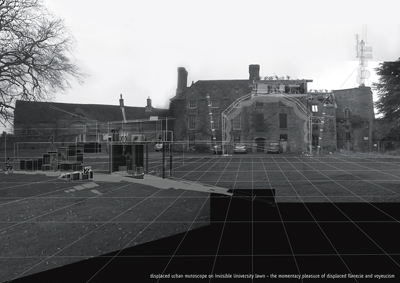
"displaced mutoscope on I.U. lawn": f.m.belfiore + w.leung
Hay on Wye, a small town in Wales, boasts that it is the worlds largest second hand bookshop. It supplies books by internet orders to a global readership.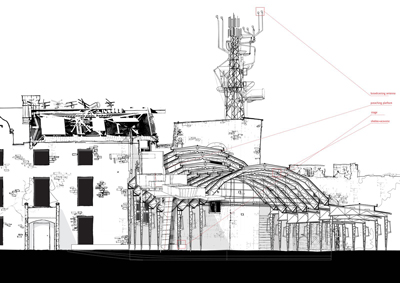
"invisible lecture auditorium space": francesco m. belfiore
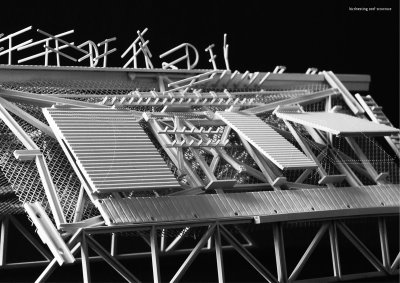
"birdnesting roof details" francesco m. belfiore
Literary London decamps to Hay on Wye for the festival: flaneurs, voyeurs and agitators of the production process of writing. Ruins are the setting for recital, storytelling, lecturing, preaching, listening, whispering and eavesdropping; while pigeonfanciers dispense messages about future events. It is a soundscape where nature and artifice are intertwined. Once the books are converted to audio format, they are shredded, pulped and recycled to provide new paper for emerging writers. Writers, readers and audience occupy an illuminating space in the ruins of history; confounded by the ever expanding accumulation of technologies.
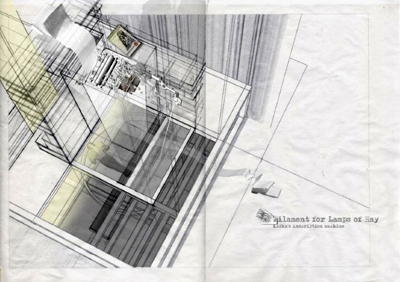
"filament for lamps of hay-writer's room": wynne leung

"birdnesting roof" francesco m. belfiore
'invisible university library' explores the position of the book, the writer, education and communication in contemporary society. We identify a gradual shift from written language to technological media, focussing on audio culture. The castle offers an idealised pastoral landscape where books are read out, transferred to audio format, broadcast to a live audience, and on radio programmes. Nature is inhabited by artifice as the castle becomes a mechanised and digitised rural artefact.
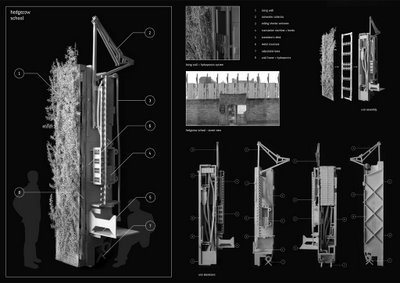
"hedgerow school": francescco m. belfiore
We started by dismantling books. We dispersed the pages of a book entitled 'The World Today' along the border between England and Wales, then collected the pages and interspersed them between the leaves of 'An Outline of History', our own portable border. Using a map of the town, we then identified the positions where old postcards had immortalised scenic views. These were then introduced into the diagrams of a book entitled 'The Process of Circuitmaking', thereby establishing a network of panoramas in the town. Our strategy was to reoccupy the historical 'postcard voids' by means of transposition: traffic islands become scenic views, postcard void becomes urban signal.
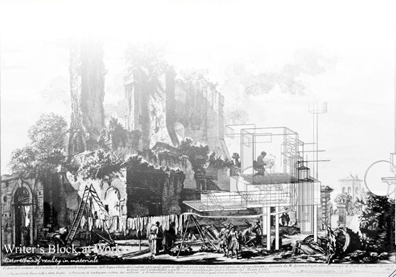
"writer's room: at work": wynne leung
Our 'hedgerow school' revives the urban tradition of storytelling. When Wales and Ireland were occupied by the English, Celtic languages were banned. Hedgerow schools emerged as a desperate attempt to pass the language on from one generation to the next. We think that the written word is less subject to alteration and reconstruction than the verbal language, and therefore the book is a museum. So books get shredded and used as a 'birdsnesting roof' or to make more paper, rolled out along the Welsh border for use by new writers.
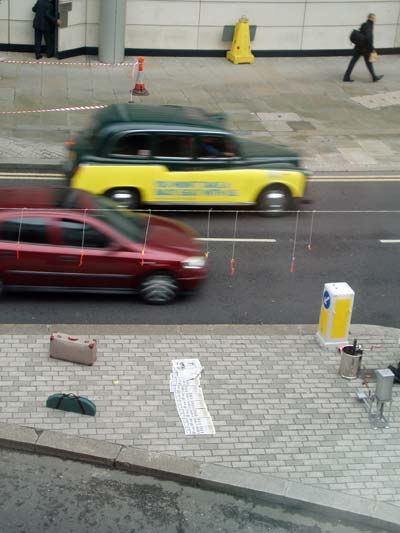
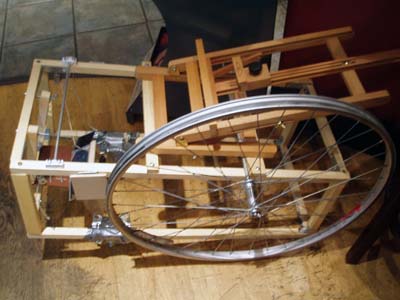
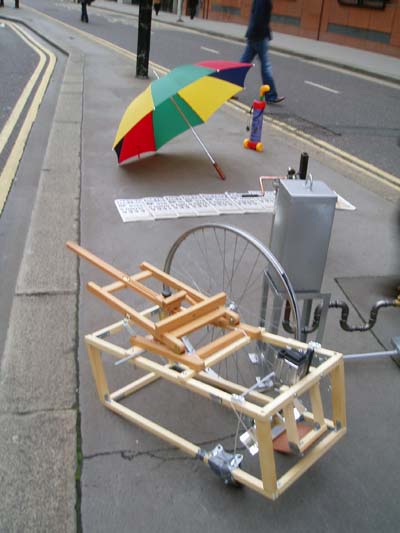
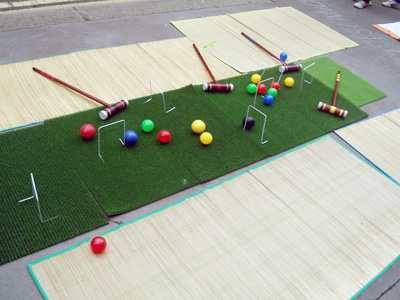
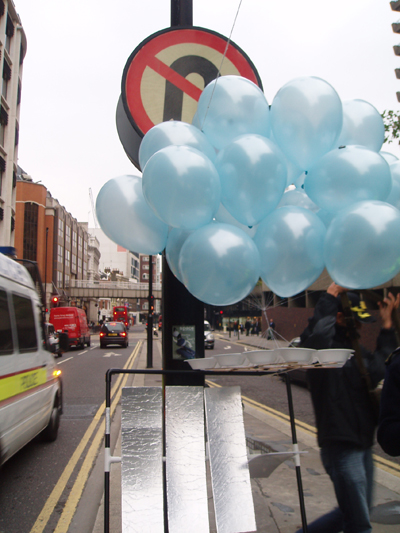
urban voids:
- a series of picnic implements activate the forgotten space of the traffic island. taxi drivers can pull up and serve themselves drinks and newspapers from concealed devices camouflaged as street furniture. knives and forks mimic temporary ‘roadworks’
- a mechanical ‘dog’ is fitted with camera, sound recorders, compositional elements for landscape portraiture, and a painters easel to record the pastoral landscape.
- taking the ‘dog’ for a walk in the temporary pastoral haven of the traffic island
- another traffic island is furnished with a miniature croquet lawn